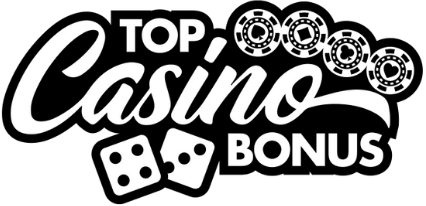Advanced craps betting strategies for experienced players
Many players saunter into a craps table thinking they’ve mastered the art just because they know the pass line and maybe toss a few dollars on the hardways. But there’s a canyon of difference between playing craps and playing it well. Experienced gamblers know that real success in craps is about discipline, timing, and using advanced betting strategies that stack probabilities, not emotions, in your favor.
Table of contents
Understanding the backbone of advanced craps strategy
The first mistake I see from overconfident so-called “veterans” is thinking advanced bets are just about complex wagers. No, true advancement comes from grasping the math behind every decision. At its heart, craps is a game of odds and expected value. You need to embed these numbers in your gut the same way a carpenter knows the weight of a nailgun or an electrician senses a short without touching a wire.
Betting with the house, not against it
Forget the allure of high-payout bets like the Any Seven or Hardways. The house edge on those is brutal. We’re talking 16% on Any Seven, a surefire bankroll bleed. Instead, anchor your play in low-house-edge bets like Pass Line with odds, Don’t Pass, Come, and Don’t Come. Combine these with free odds betting, a powerful weapon the house tolerates but doesn’t advertise because it offers zero edge for them.
Proper use of odds bets
Consider this: the Pass Line without odds carries a 1.41% house edge. But after placing just 2x odds behind it, you whittle that edge down considerably, to about 0.85%. Push it to 5x or 10x odds, and you’re nearing even money with the house. Not all online casinos offer full odds betting, so it’s crucial you find the right platform. For those in search of a trustworthy site, Casino Cruise regularly receives praise for its clean craps layout and generous odds policy.
Dynamic betting: timing over temptation
Most folks throw chips like spaghetti at a wall, hoping something sticks. That randomness is amateur behavior. Advanced players know when to press bets, when to regress, and, most critically, when to walk. Discipline isn’t sexy, but it’s the sharpest blade in your strategic toolkit.
Pressing with a purpose
Pressing bets, increasing your wager after a win, isn’t about getting wild. It’s surgical. For example: after two consecutive place bet wins on the 6 or 8, consider pressing by 50%, then reinvesting profits by a smaller fraction on the third win. After that, lock your previous gains and regress. This controlled ascent protects you from catastrophic cold streaks while still letting you capitalize during hot rolls.
Regression to maintain profit
One of the hardest things I had to drill into younger players’ heads: regression isn’t defeat, it’s survival. Let’s say you place the 6 for $30 and it hits twice. You’re up $70. Regress it to $12 afterward. You’ve pocketed decent gains and kept exposure low. It’s not flashy, sure, but steady beats spectacular when you’re playing the long game.
Hedging the don’ts: cold table mastery
You’ll hear loudmouths brag about their hot streaks, but ask them what they do during a cold table, and you’ll get blank stares. A sophisticated player recognizes when a table’s running ice-cold and adjusts accordingly. The Don’t Pass and Don’t Come become your silent assassins here.
Layered don’t betting
Let’s say you enter just after a shooter sevens out. That’s an ideal time to lay a Don’t Pass bet. Once the point is set, wait one or two rolls observing the dice rhythm. If no numbers repeat, creep into Don’t Come with calculated odds behind it, maybe 2x or 3x. Always hedge carefully. And never chase losses by laying more than you can cover on a sudden point hit.
Side strategies: power in subtle leverage
While core betting strategies are your bread and butter, complementary tactics offer crucial margins over time. Think of these as sharpening your blade before the duel.
Dice rhythm recognition
Some call it voodoo, I call it pattern analysis. Experienced shooters develop subtle routines. Learn to spot changes in their cadence or throw trajectory. A consistent shooter may warrant temporary pass line optimism, while erratic throws call for a pullback or switch to the dark side betting. This isn’t conspiracy theory nonsense, it’s just observational skill honed over years of watching tables breathe.
Looking beyond the table
Advanced gaming isn’t limited to craps. Diversifying your portfolio with other skill-based games helps sharpen statistical instincts. Techniques like shuffle tracking in blackjack demand similar discipline and vigilance, and mastering one can absolutely refine your approach to the others.
Choosing the right casino
Strategy means nothing if you’re playing at a rigged table or one with razor-thin limits. Always vet your casino. If you’re serious, lean toward vetted platforms. For example, Borgata Casino offers deep buy-in flexibility that appeals to high-level players. Over at Casumo, their user interface makes it easy to switch stances during a session, helpful for fluid strategies. Another understated option is Chance Hill, where the long-standing reputation matters to serious gamblers.
Final thoughts: the philosophy behind expertise
A truly advanced craps strategy is less about knowing what to bet and more about knowing what not to bet. The real pros, the ones who survive after a hundred tables and still show a positive bankroll, understand restraint, rhythm, and reading the room. They measure risk like a jeweler examines a diamond: from every angle, under skeptical light.
Always remember: craps, for all its shouting and crowds and dice drama, remains a probability game. Respect that, respect the mechanics, and never let ego elbow out discipline. Roll smart, stake wisely… and you’ll find the table eventually bends your way.





0 Comments